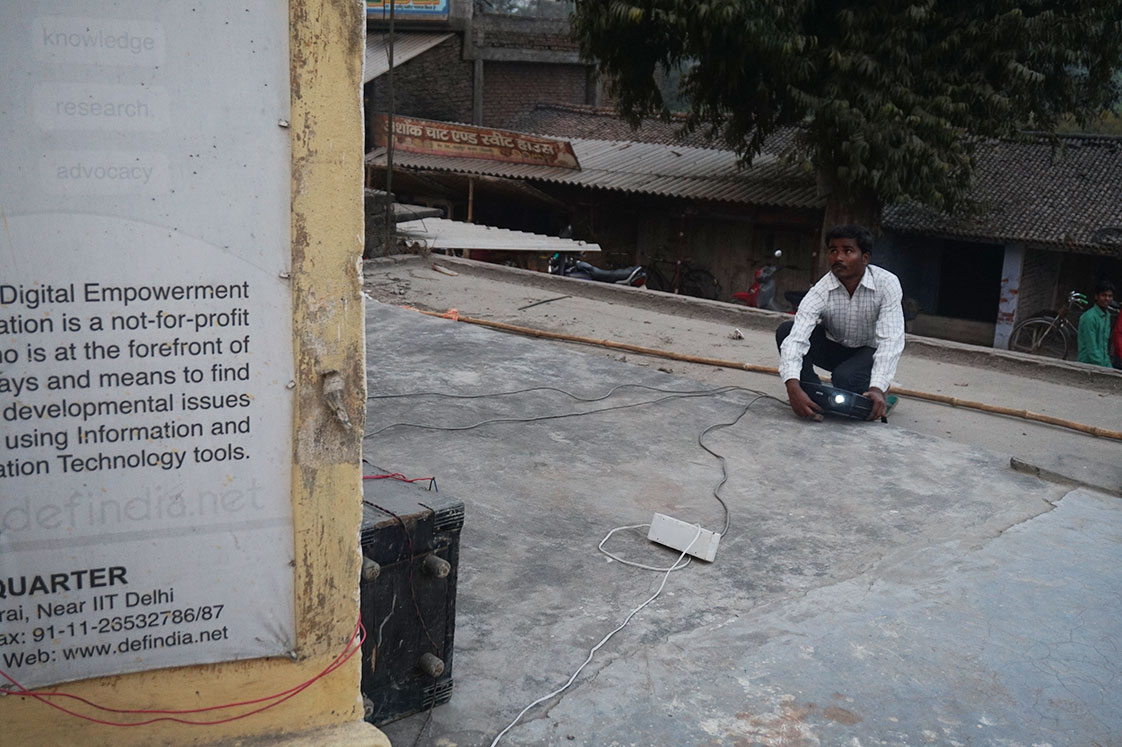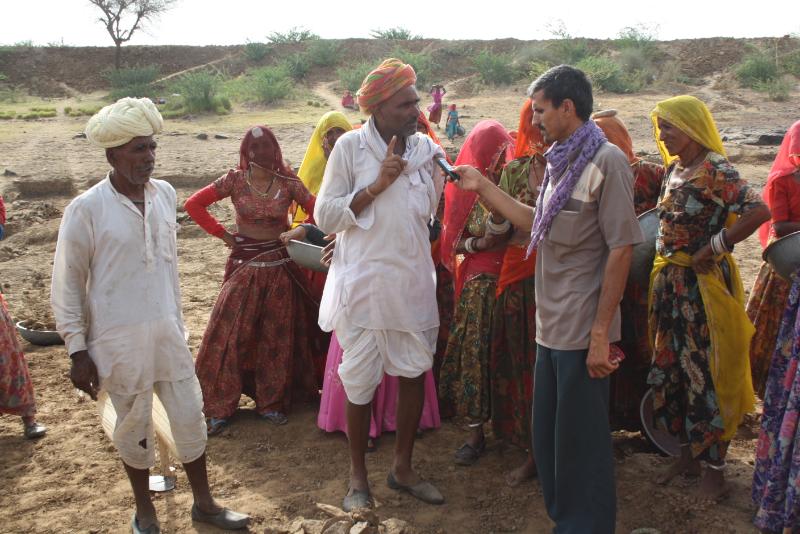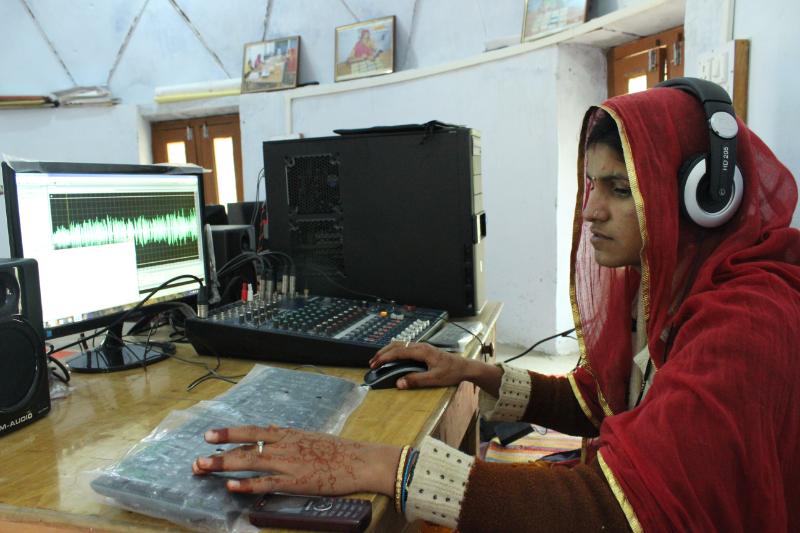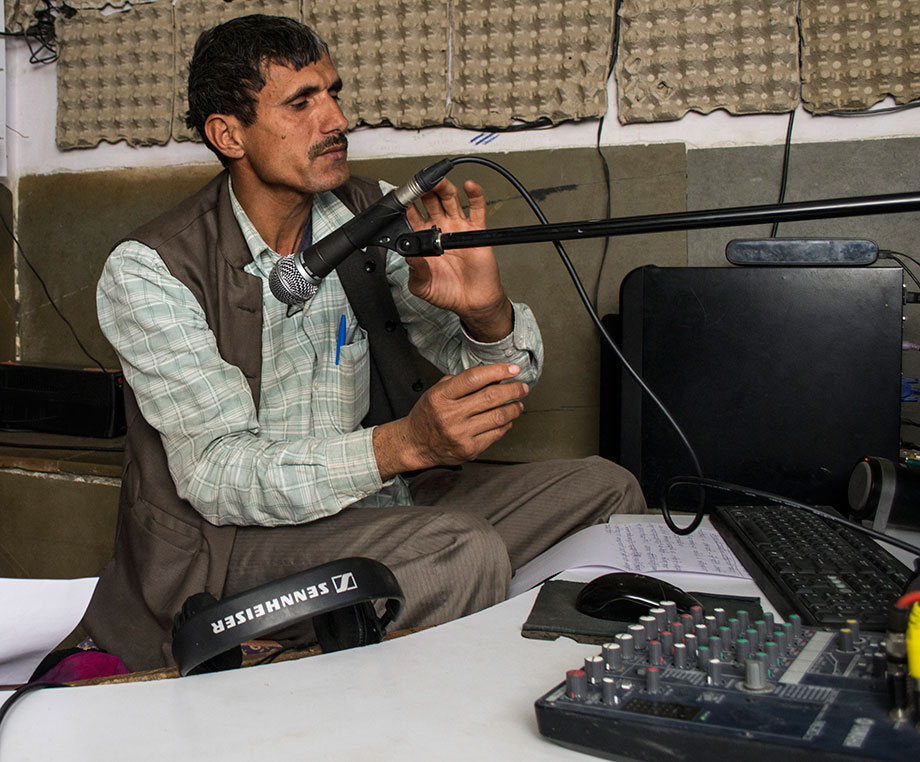TBI BLOGS: Community Radio in a Rajasthan Village Is Using the Internet to Empower 50,000 Lives
A radio repairman turned broadcaster, Raghav Mahto helped set up a community radio station in Tilonia in 2009. RJ Norat Mal now uses the power of the Internet to find and deliver content that helps create awareness about the villagers' rights and provides information about government schemes.

A radio repairman turned broadcaster, Raghav Mahto helped set up a community radio station in Tilonia in 2009. RJ Norat Mal now uses the power of the Internet to find and deliver relevant content to his listeners – content that helps create awareness about their rights and provides information about government schemes.
Every morning at 7 am, about 40,000-60,000 people in and around the village of Tilonia in Ajmer district of Rajasthan, turn on their radio transistors and tune into 90.4 FM to listen to Norat Mal and Aarti Devi’s broadcast.
Tilonia is a small village, with a population of about 7,500, located north east of Ajmer, about 50 kms away.

Photo: Cathy Chen
The village’s relationship with Tilonia Radio started on November 9, 2009, when Norat, who belongs to Tilonia, was helped by frugal community radio expert Raghav Mahto and four other men and women from Tilonia in setting up a makeshift broadcasting studio in Barefoot College’s Tilonia Craft shop.
Raghav is a radio repairman from Mansoorpur in Vaishali district in Bihar, who learnt how to broadcast radio programmes by a hit-and-trial method. There, Raghav used to run an FM station from 2001 to 2006, which attracted thousands of listeners. However, once the local authorities noticed his unlicensed station, they pulled the shutters down on it.
With Raghav’s experience, setting up a community radio station in Tilonia became much easier. Another factor that helped was the name of Barefoot College (an NGO founded by social activist Bunker Roy), on the campus of which the broadcasting studio was to be set up. The idea to set up a community radio station was suggested by Mazdoor Kisan Shakti Sangathan founder Aruna Roy and late journalist Ajit Bhattacharya, and its set up was facilitated by Digital Empowerment Foundation Founder-Director Osama Manzar. The thought behind setting up the station was to share the rich collection of audio/visual archive and social message-driven puppetry with a wider population that was not just restricted to Tilonia. So Tilonia Radio helped share these audio files through the medium of audio.
The challenge was not in setting up the infrastructure but in generating/collecting content and using technology to broadcast it. The challenge is quite similar even today. While Norat has access to unlimited information now, the challenge is to pick content which would prove be useful for the people of Tilonia and the villages around it.
Before Norat got comfortable with using digital tools (he still considers himself a novice though), collecting data involved only primary ground research.
It was only in 2012 that Norat was introduced to the amazing world of the Internet. Today, fieldwork actually complements his online research and vice versa.

The World Wide Web, and Facebook especially, have been extremely beneficial for this purpose, believes Norat.
“I go into the field and collect content while Aarti handles the editing. The rest is all Ram bharose (left to God),” Norat says and laughs. “These days, I get a lot of information on the Internet,” he adds.
Norat explains there is no dearth of information online. Besides carrying out regular interviews, interactions and vox-pops with the village, he looks for royalty-free broadcast material available on the Internet and often uses it for Tilonia Radio. The government is always coming up with new schemes or policies so he also has to keep an eye out for gazette notifications.
However, lately, all the government websites have been through or are going through a revamp. The position of content is being reshuffled.
“For example, the new layout of the rural development and labour ministries has made it difficult for me to find information that I’m looking for. I feel lost and have to literally scan every section of the website,” he says.
This raises an important question. With the incumbent government so gung-ho about Digital India, they’re paying key attention towards making government websites look more appealing. However, in this effort of making the websites more “appealing and accessible,” are they losing out on ensuring ease of use as well? Are there more people like Norat who feel lost when navigating the new government websites?
In the middle of our conversation, Norat is interrupted by two men from the village who have come with a set of papers.
After his interaction with them, Norat tells me, “This was my offline community radio. As I raise awareness among people about the Right to Information (RTI) through the radio, people from the village and nearby often come to me for more details about filing an RTI or for detailed information about some government scheme or another. The good thing about a community radio is that it not only supports people online but also offline.”
Norat and Aarti frequently organise offline awareness sessions for villagers as well.

Most recently, on January 12, 2016, a special event was organised in which several activists were invited to talk about pension, ration and NREGA. The event was part of an upcoming 30-episode broadcast series called Ab Ki Baar Mera Adhikaar.’
Returning to our conversation about using the Internet for content generation, Norat says, “I don’t know much about Facebook, except how to accept friends and like what people say. In fact, I hardly post anything on Facebook. Instead, I like to read what others write.”
Facebook is a platform where harbingers of community radio have formed a community of their own. There are dedicated pages for various community radio stations that share content they have broadcast. If their content is applicable or useful for another region, it is picked up by the respective community radio stations. There is also a document on Google Drive where everyone can share open content. In this way, community radio stations get to share content with each other, which would otherwise not have been possible, and also create a larger sense of community. The community radio content that was otherwise available for a population within the 15 km radius becomes available and useful for people across the country through the Internet.
“Today, you can apply for all kinds of identification cards — such as Ration Card, Aadhaar Card and Wage Card, among others — online. There are a lot of good government schemes, especially for girl child and education, which are available for the people. The people just don’t know about it. So, as a community radio broadcaster, I have the responsibility to make people aware about such schemes, which is why I have to stay on a lookout on the Internet for any new or upcoming government scheme,” he adds.
Tilonia Radio is live every day in Hindi and Marwari from 7-9 am, 12-2 pm and 6-9 pm.

New Delhi-based organisation Digital Empowerment Foundation (DEF) provides Tilonia Radio with technical, strategic and content advisory support. The Indian Institute of Technology in Delhi is also an online support provider to the community radio station. It was DEF that had recommended Raghav assist Norat in establishing a low-cost broadcasting studio in Tilonia, and provided further training for content generation and sustainability.
On July 21, 2015, under the Wireless for Communities (W4C) programme implemented by DEF in partnership with the Internet Society (ISOC), DEF set up a wireless Internet connection at Barefoot College in an effort to take the Internet to areas where there is no access. Under this project, more than 20 community areas, including campuses like the Barefoot College, have already been connected across the country. Radio Tilonia now uses this Wi-Fi connection for broadcasting purposes.
Radio Jagriti in Birni village of district Giridih in Jharkhand and Radio Bulbul in Bhadrak district of Odisha are two other community radio stations for which DEF provides financial, technical, strategic and content support. Henvalvani Community Radio in Chamba region of Uttarakhand is also a partner for DEF’s Soochna Seva programme in the state. Over the years, DEF has also recognised the efforts of at least 25 others by awarding them with Manthan Awards under the category of Community Radio, which was introduced in 2007.
Like this story? Or have something to share? Write to us: [email protected], or connect with us on Facebook and Twitter (@thebetterindia).
If you found our stories insightful, informative, or even just enjoyable, we invite you to consider making a voluntary payment to support the work we do at The Better India. Your contribution helps us continue producing quality content that educates, inspires, and drives positive change.
Choose one of the payment options below for your contribution-
By paying for the stories you value, you directly contribute to sustaining our efforts focused on making a difference in the world. Together, let's ensure that impactful stories continue to be told and shared, enriching lives and communities alike.
Thank you for your support. Here are some frequently asked questions you might find helpful to know why you are contributing?


This story made me
-
97
-
121
-
89
-
167














